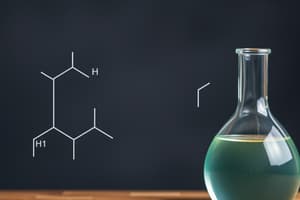Podcast
Questions and Answers
What is the answer for Card 1?
What is the answer for Card 1?
- Option D
- Option C
- Option B
- Option A (correct)
What is the answer for Card 2?
What is the answer for Card 2?
- Option D (correct)
- Option C
- Option B
- Option A
What is the answer for Card 3?
What is the answer for Card 3?
- Option B
- Option D
- Option A (correct)
- Option C
What is the answer for Card 4?
What is the answer for Card 4?
What is the answer for Card 5?
What is the answer for Card 5?
What is the answer for Card 6?
What is the answer for Card 6?
What is the answer for Card 7?
What is the answer for Card 7?
What is the answer for Card 8?
What is the answer for Card 8?
What is the answer for Card 9?
What is the answer for Card 9?
What is the answer for Card 10?
What is the answer for Card 10?
What is the answer for Card 11?
What is the answer for Card 11?
What is the answer for Card 12?
What is the answer for Card 12?
What is the answer for Card 13?
What is the answer for Card 13?
What is the answer for Card 14?
What is the answer for Card 14?
What is the answer for Card 15?
What is the answer for Card 15?
The elements and compounds are examples of ______.
The elements and compounds are examples of ______.
The numbers 1 and 2 exemplify ______.
The numbers 1 and 2 exemplify ______.
The definition of simple substances is referred to as ______.
The definition of simple substances is referred to as ______.
A substance that is chemically reactive is described as ______.
A substance that is chemically reactive is described as ______.
Physical and chemical changes can both be referred to as ______.
Physical and chemical changes can both be referred to as ______.
Flashcards are hidden until you start studying
Study Notes
Multiple Choice Questions
- First 15 cards contain multiple choice questions, each with a distinct lettered answer (A, B, C, D) indicating the correct choice.
- Answers denote understanding of various concepts, though the specific concepts are unspecified.
Completion Questions
- Completion questions provide key concepts associated with terms:
- Elements and compounds identified in #1.
- Numerical references "1" and "2" in #2 may pertain to classifications or properties.
- Simple substances defined in #3 indicate basic chemical identities.
- Reactive properties highlighted in #4 relate to how substances interact.
- Two categories, Physical and Chemical, recognized in #5 categorize types of properties.
General Notes
- Focus on enhancing knowledge of chemical substances, their classifications, and properties.
- Provide a framework for exam preparation centered on understanding fundamental chemistry concepts.
Studying That Suits You
Use AI to generate personalized quizzes and flashcards to suit your learning preferences.




